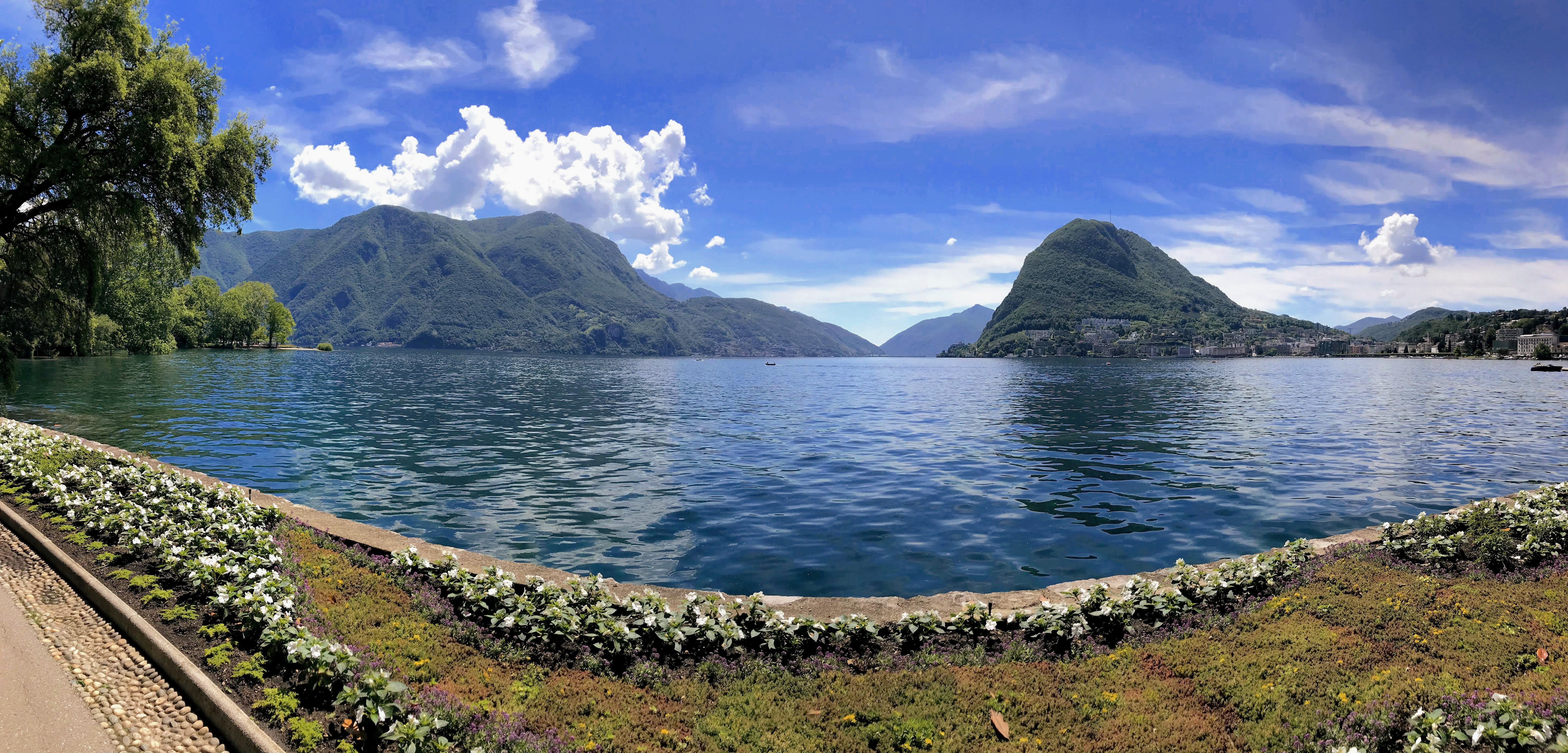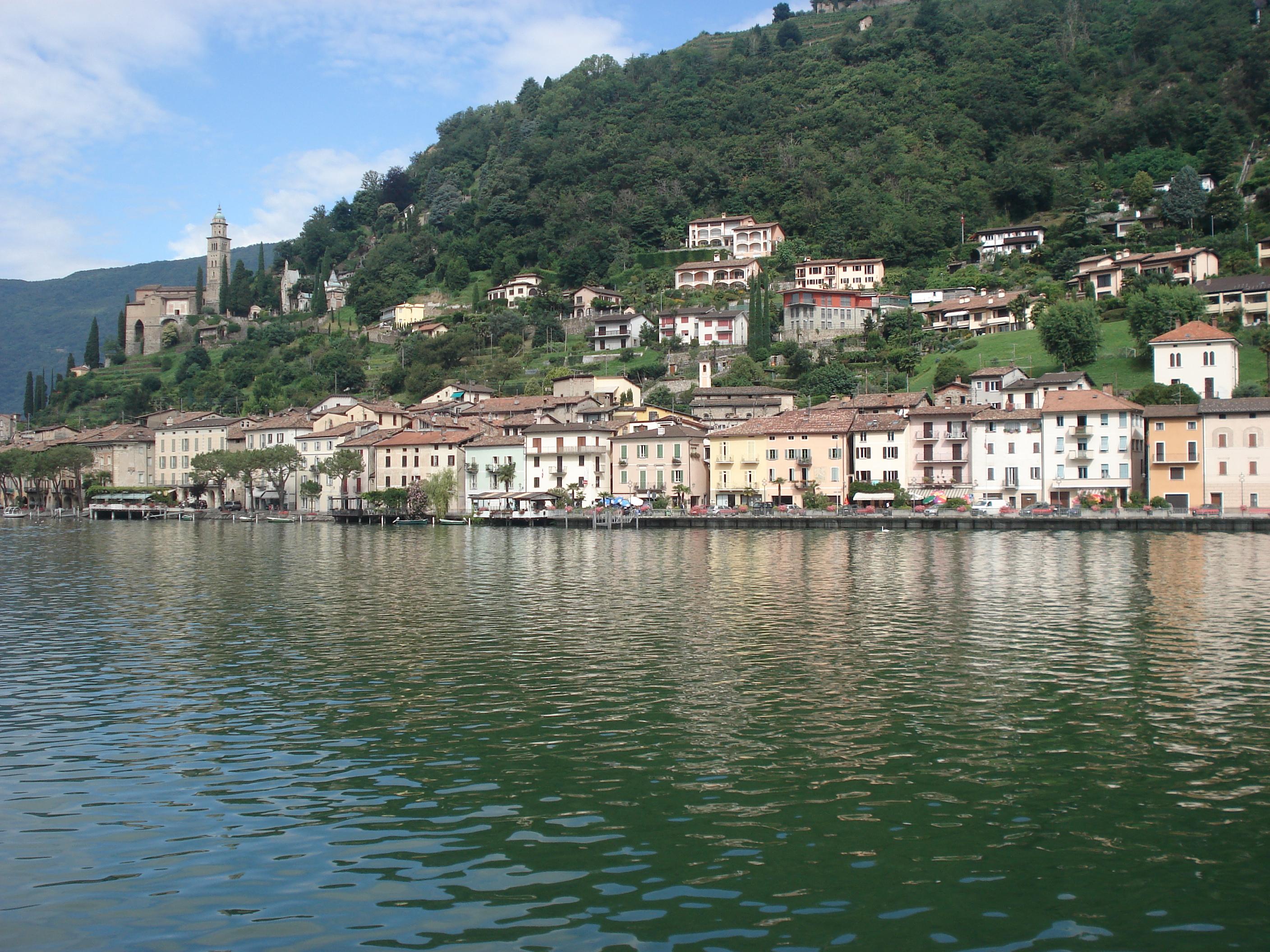|
Melide, Switzerland
Melide is a municipality in the district of Lugano in the canton of Ticino in Switzerland. The village lies very close to the mountain Monte San Salvatore and is directly on the Lake of Lugano. The Melide causeway to the east was built to make it possible to cross to Bissone and to allow a north-south highway to be built. Melide is known worldwide for the famous Swissminiatur, a museum that shows famous buildings in Switzerland presented in miniature form. History Melide is first mentioned in 1034 as ''Melede''. It was originally ruled by Como. After ownership transferred to Milan in the first half of the 15th Century, Melide was required to furnish five soldiers for the Duke of Milan. In 1482, a toll and customs station is first mentioned in Melide. Until 1427 it was part of the parish of Lugano, followed by the parish of Carona. It became an independent parish in 1525. As the excavations of 1991-92 showed, the parish church of SS Quirico e Giulitta developed in ... [...More Info...] [...Related Items...] OR: [Wikipedia] [Google] [Baidu] |
Lugano (district)
The Lugano District ( it, Distretto di Lugano also called Luganese) is a district of Canton of Ticino, southern Switzerland. The capital is the city of Lugano. It has a population of (as of ). Geography The Lugano District has an area, , of . Of this area, or 15.7% is used for agricultural purposes, while or 66.5% is forested. Of the rest of the land, or 15.3% is settled (buildings or roads), or 0.7% is either rivers or lakes and or 4.6% is unproductive land. Of the built-up area, housing and buildings made up 9.1% and transportation infrastructure made up 3.6%. Out of the forested land, 59.6% of the total land area is heavily forested and 3.7% is covered with orchards or small clusters of trees. Of the agricultural land, 5.7% is used for growing crops and 9.1% is used for alpine pastures. Of the water in the district, 0.2% is in lakes and 0.5% is in rivers and streams. Of the unproductive areas, 4.2% is unproductive vegetation. Demographics The Lugano District has a ... [...More Info...] [...Related Items...] OR: [Wikipedia] [Google] [Baidu] |
Parish
A parish is a territorial entity in many Christian denominations, constituting a division within a diocese. A parish is under the pastoral care and clerical jurisdiction of a priest, often termed a parish priest, who might be assisted by one or more curates, and who operates from a parish church. Historically, a parish often covered the same geographical area as a manor. Its association with the parish church remains paramount. By extension the term ''parish'' refers not only to the territorial entity but to the people of its community or congregation as well as to church property within it. In England this church property was technically in ownership of the parish priest ''ex-officio'', vested in him on his institution to that parish. Etymology and use First attested in English in the late, 13th century, the word ''parish'' comes from the Old French ''paroisse'', in turn from la, paroecia, the latinisation of the grc, παροικία, paroikia, "sojourning in a foreign ... [...More Info...] [...Related Items...] OR: [Wikipedia] [Google] [Baidu] |
Italian Language
Italian (''italiano'' or ) is a Romance language of the Indo-European language family that evolved from the Vulgar Latin of the Roman Empire. Together with Sardinian, Italian is the least divergent language from Latin. Spoken by about 85 million people (2022), Italian is an official language in Italy, Switzerland (Ticino and the Grisons), San Marino, and Vatican City. It has an official minority status in western Istria (Croatia and Slovenia). Italian is also spoken by large immigrant and expatriate communities in the Americas and Australia.Ethnologue report for language code:ita (Italy) – Gordon, Raymond G., Jr. (ed.), 2005. Ethnologue: Languages of the World, Fifteenth edition. Dallas, Tex.: SIL International. Online version Itali ... [...More Info...] [...Related Items...] OR: [Wikipedia] [Google] [Baidu] |
Coat Of Arms
A coat of arms is a heraldry, heraldic communication design, visual design on an escutcheon (heraldry), escutcheon (i.e., shield), surcoat, or tabard (the latter two being outer garments). The coat of arms on an escutcheon forms the central element of the full achievement (heraldry), heraldic achievement, which in its whole consists of a shield, supporters, a crest (heraldry), crest, and a motto. A coat of arms is traditionally unique to an individual person, family, state, organization, school or corporation. The term itself of 'coat of arms' describing in modern times just the heraldic design, originates from the description of the entire medieval chainmail 'surcoat' garment used in combat or preparation for the latter. Roll of arms, Rolls of arms are collections of many coats of arms, and since the early Modern Age centuries, they have been a source of information for public showing and tracing the membership of a nobility, noble family, and therefore its genealogy across tim ... [...More Info...] [...Related Items...] OR: [Wikipedia] [Google] [Baidu] |
Blazon
In heraldry and heraldic vexillology, a blazon is a formal description of a coat of arms, flag or similar emblem, from which the reader can reconstruct the appropriate image. The verb ''to blazon'' means to create such a description. The visual depiction of a coat of arms or flag has traditionally had considerable latitude in design, but a verbal blazon specifies the essentially distinctive elements. A coat of arms or flag is therefore primarily defined not by a picture but rather by the wording of its blazon (though in modern usage flags are often additionally and more precisely defined using geometrical specifications). ''Blazon'' is also the specialized language in which a blazon is written, and, as a verb, the act of writing such a description. ''Blazonry'' is the art, craft or practice of creating a blazon. The language employed in ''blazonry'' has its own vocabulary, grammar and syntax, which becomes essential for comprehension when blazoning a complex coat of arms. Ot ... [...More Info...] [...Related Items...] OR: [Wikipedia] [Google] [Baidu] |
Lake Lugano
__NOTOC__ Lake Lugano ( it, Lago di Lugano or , from la, Ceresius lacus; lmo, Lagh de Lugan) is a glacial lake which is situated on the border between southern Switzerland and northern Italy. The lake, named after the city of Lugano, is situated between Lake Como and Lago Maggiore. It was cited for the first time by Gregory of Tours in 590 with the name ''Ceresio'', a name which is said to have derived from the Latin word ''cerasus'', meaning cherry, and refers to the abundance of cherry trees which at one time adorned the shores of the lake. The lake appears in documents in 804 under the name ''Laco Luanasco''. There are various mountains and tourist destinations on the shores of the lake including Monte Brè to the east, Monte San Salvatore west of Lugano, and Monte Generoso on the south-eastern shore. The World Heritage Site Monte San Giorgio is situated south of the lake. Also located to the south is the Cinque Vette Park. The lake is drained by the Tresa, which empties i ... [...More Info...] [...Related Items...] OR: [Wikipedia] [Google] [Baidu] |
Lime Kiln
A lime kiln is a kiln used for the calcination of limestone (calcium carbonate) to produce the form of lime (material), lime called quicklime (calcium oxide). The chemical equation for this chemical reaction, reaction is :Calcium carbonate, CaCO3 + heat → Calcium oxide, CaO + Carbon dioxide, CO2 This reaction can take place at anywhere above 840 °C (1544 °F), but is generally considered to occur at 900 °C(1655 °F) (at which temperature the partial pressure of CO2 is 1 atmosphere (unit), atmosphere), but a temperature around 1000 °C (1832 °F) (at which temperature the partial pressure of CO2 is 3.8 atmospheres) is usually used to make the reaction proceed quickly.Parkes, G.D. and Mellor, J.W. (1939). ''Mellor's Modern Inorganic Chemistry'' London: Longmans, Green and Co. Excessive temperature is avoided because it produces unreactive, "dead-burned" lime. Slaked lime (calcium hydroxide) can be formed by mixing quicklime with water. Early li ... [...More Info...] [...Related Items...] OR: [Wikipedia] [Google] [Baidu] |
Morcote
Morcote is a municipality in the Swiss canton of Ticino situated about 10 kilometres from Lugano in the district of Lugano on the shore of Lake Lugano. History Morcote is first mentioned historically in 926 as ''Murcau'', which comes from the Latin ''Morae caput'', meaning ''head of the hill''.From the book "Morcote Die Perle des Luganersees“ from Adriano Antonini – Carlo Meazza, Macchione editore, quoted iMorcote Tourism – The Morcote Story accessed 26 February 2009 In 1353 it was mentioned as ''Murchoe'' and again in 1453 as ''Murchote''. Starting around 1100, Morcote was home to a castle that was built to guard and control commerce on the lake. Until the dam was built in Melide in 1847, Morcote was the largest port on Lake Lugano. Goods from northern Italy were shipped across the lake to the rest of Ticino. In 1422 the town was granted privileges by the Duke of Milan, which included the rights to impose taxes, self-government, independent fishing and the right to hold ... [...More Info...] [...Related Items...] OR: [Wikipedia] [Google] [Baidu] |
Tagsatzung
The Federal Diet of Switzerland (german: Tagsatzung, ; french: Diète fédérale; it, Dieta federale) was the legislative and executive council of the Old Swiss Confederacy and existed in various forms from the beginnings of Swiss independence until the formation of the Swiss federal state in 1848. The Diet was a meeting of delegates from the individual cantons. It was the most wide-reaching political institution of the Old Swiss Confederacy, but its power was very limited, as the cantons were essentially sovereign. While the composition and functions of the Federal Diet had changed and evolved since its founding in the 15th century, it was most notably reorganised during the Revolutionary and Napoleonic period. The understanding of the Federal Diet can be broken down into three main periods: before the French invasion in 1798, the period of the French invasion and the Act of Mediation, and from its restructuring by the Federal Treaty (''Bundesvertrag'') of 7 August 1815 to ... [...More Info...] [...Related Items...] OR: [Wikipedia] [Google] [Baidu] |
Old Swiss Confederacy
The Old Swiss Confederacy or Swiss Confederacy (German language, Modern German: ; historically , after the Swiss Reformation, Reformation also , "Confederation of the Swiss") was a loose confederation of independent small states (, German or In the charters of the 14th century described as "communities" (, ), the German term ''Orte'' becomes common in the early 15th century, used alongside "estate" after the Reformation. The French term is used in Fribourg in 1475, and after 1490 is increasingly used in French and Italian documents. It only enters occasional German usage after 1648, and only gains official status as synonym of with the Act of Mediation of 1803. ), initially within the Holy Roman Empire. It is the precursor of the modern state of Switzerland. It formed during the 14th century, from a foundation of the Old Swiss Confederacy, nucleus in what is now Central Switzerland, growth of the Old Swiss Confederacy, expanding to include the cities of Zürich and Bern by ... [...More Info...] [...Related Items...] OR: [Wikipedia] [Google] [Baidu] |








